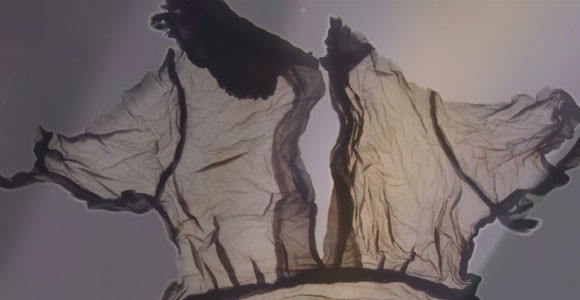Since 2007, Linda Hoaglund has produced three films and directed two relating to the Pacific War and postwar Japan. Born in Japan as the daughter of American missionary parents, she attended Japanese public schools. A graduate of Yale University, she was a bilingual news producer for English television before joining an independent American film production company as a producer.
Most recently, she completed her new film, Things Left Behind, a documentary about the potential for art to transfigure memory and trauma. The film was precipitated by a major Canadian exhibition of photographs of clothing left behind by those who perished in the atomic bomb at Hiroshima, taken by famed photographer Ishiuchi Miyako. [Press materials]
Things Left Behind will play at DOC NYC on November 17.
Women and Hollywood: Please give us your description of the film playing.
Linda Hoaglund: Things Left Behind explores the transformative power of the first major international art exhibit devoted to the atomic bomb. The exhibition, at the Museum of Anthropology in Vancouver, featured large-format color photographs of clothing once worn by those who perished, taken by renowned Japanese photographer Ishiuchi Miyako. Ishiuchi brought the garments — still colorful and fashionable nearly seven decades later — out of the Hiroshima Peace Memorial archive and photographed them in the light to trace the spirits of those who once wore them. A cinematic reverie about art’s potential to recast historical memory.
WaH: What drew you to this story?
LH: Because my parents were American missionaries who sent me to public schools in rural Japan, I had to confront Hiroshima as a child. I was in the fourth grade — the only American in my class — when our teacher wrote the words “America” and “Atomic Bomb” in white chalk on the blackboard. All forty Japanese children turned around to stare at me. My country had done something unforgivable and I had to take responsibility for it, all by myself. I desperately wanted to dig a hole under my desk, to escape my classmates’ mute disbelief and never have to face them again. Things Left Behind represents the culmination of my attempts to find a way out of that hole.
WaH: What was the biggest challenge in making the film?
LH: The first decision I made was to exclude all archival footage of the atomic bomb along with images of its disfigured victims. The second decision I made was to make the 48 photographs the main character, not the artist. That’s when I panicked, thinking I couldn’t make a film under those rules. But I managed to find a way out of the corner I had deliberately backed myself into.
WaH: What advice do you have for other female directors?
LH: Follow your heart and your guts, back yourself into a corner with your own rules, and never give up.
WaH: What’s the biggest misconception about you and your work?
LH: All my films have found distribution and prestige in the Japanese market, so I actually feel my films are very well received and seldom misunderstood.
WaH: Do you have any thoughts on what are the biggest challenges and/or opportunities for the future with the changing distribution mechanisms for films?
LH: The film I’m editing now is about rescued animals. I intend to create a powerful marketing network working with animal rescue groups long before my film is completed to ensure wide distribution and exposure.
WaH: Name your favorite women directed film and why.
LH: Gillian Armstrong directed a film called High Tide, which includes a striptease scene that only a woman could have conceived and directed. As the actress starts to strip, the music continues and the director cuts to the stripper’s boyfriend sitting and waiting in her dressing room. Bravo! Also, Armstrong directed Charlotte Gray, one of my all-time favorite films.
Watch the trailer for Things Left Behind:







